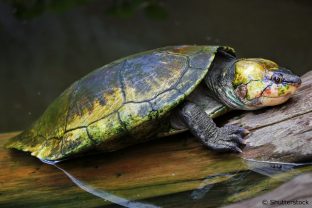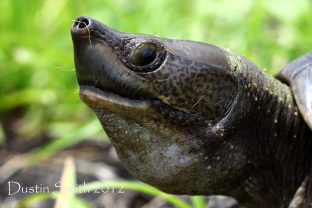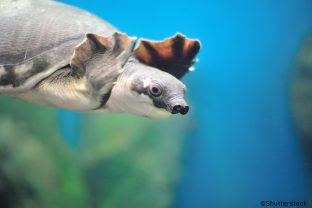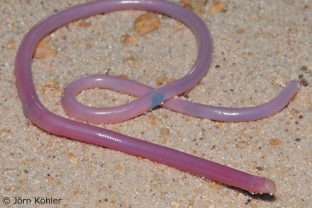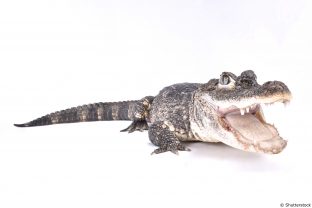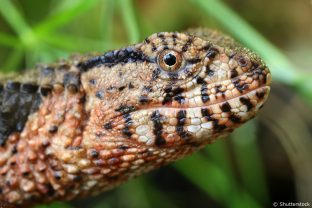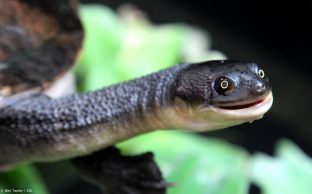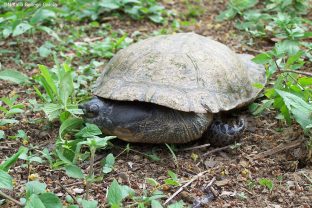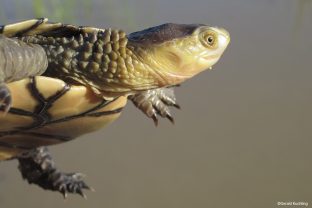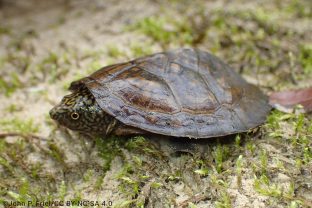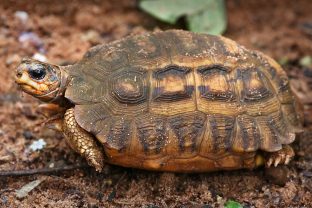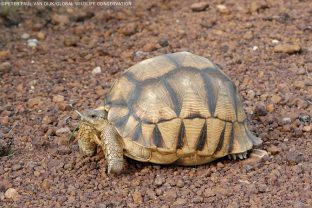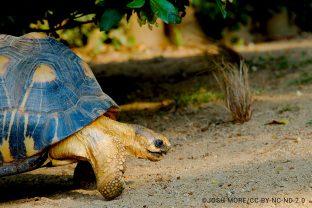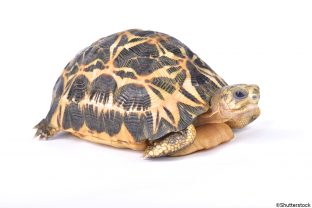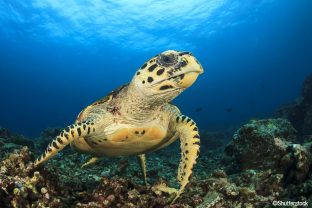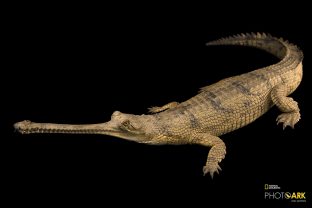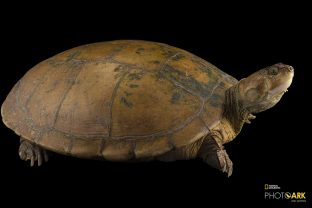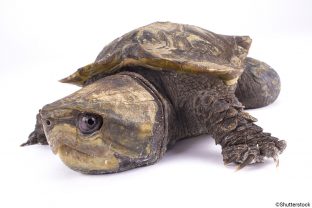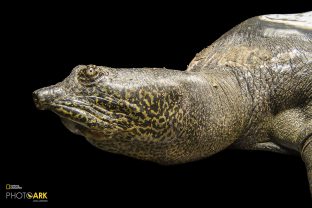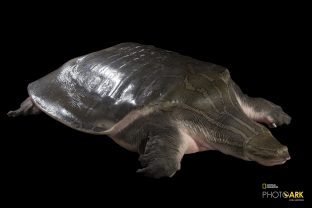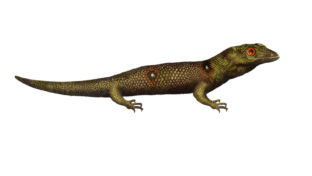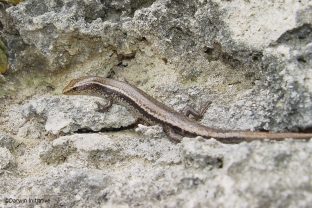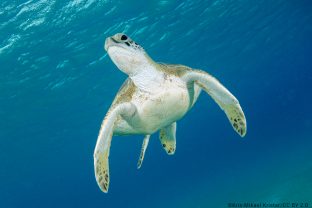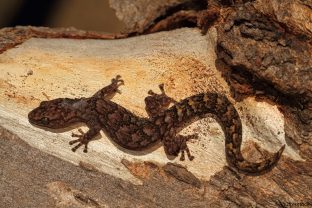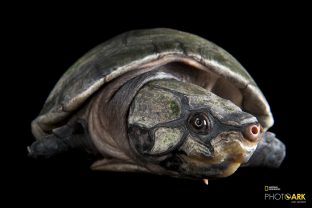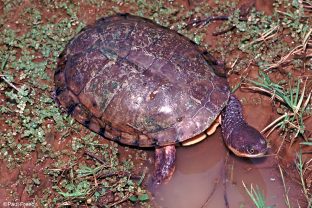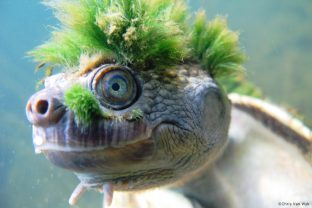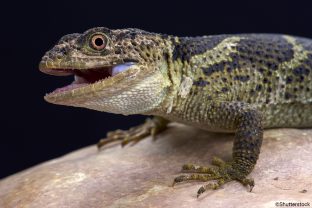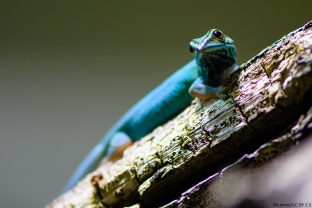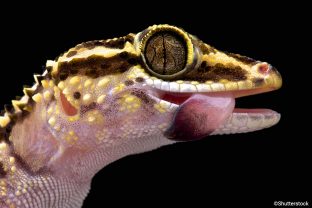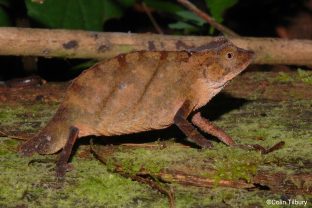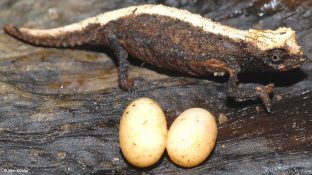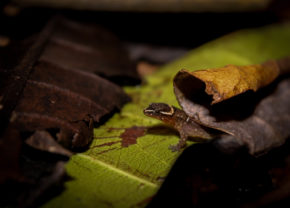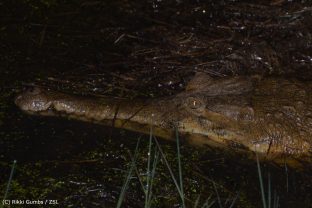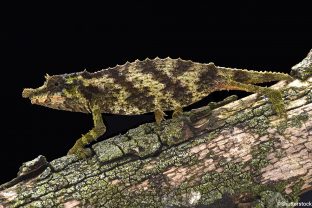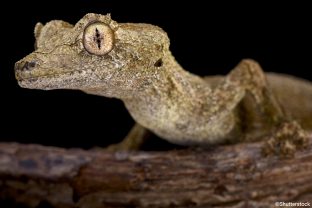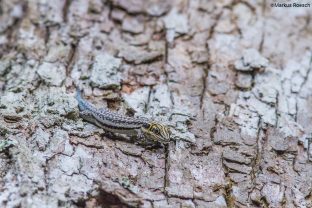TOP EDGE Reptiles
Madagascar Big-headed Turtle
Erymnochelys madagascariensis
The Critically Endangered Madagascar big-headed turtle is the world’s most Evolutionarily Distinct and Globally Endangered reptile. In fact, this species has the highest EDGE score of any terrestrial vertebrate!
Conservation Attention
Good
Central American River Turtle
Dermatemys mawii
The Critically Endangered Central American river turtle is the sole surviving species of an historically widespread family of turtles. However, the entire lineage is now restricted to parts of Belize, southern Mexico and Guatemala.
Conservation Attention
Medium
Pig-nosed Turtle
Carettochelys insculpta
The pig-nosed turtle is the sole surviving member of its entire family, Carettochelyidae, and sits alone on a branch of the tree of life reaching back around 140 million years. That is more than 70 million years before the extinction of the dinosaurs!
Conservation Attention
Medium
Madagascar blind snake
Xenotyphlops grandidieri
The Critically Endangered Madagascar blind snake is a tiny, worm-like snake unlike any other.
Conservation Attention
Very Low
Chinese Alligator
Alligator sinensis
The Critically Endangered Chinese alligator is the only species in its entire family found outside of the Americas. Its closest living relative is the famous American alligator.
Conservation Attention
Medium
Chinese Crocodile Lizard
Shinisaurus crocodilurus
There are perhaps no more than 1,000 individuals of the Endangered Chinese crocodile lizard — which is found in southern China and northern Vietnam — remaining in the wild today.
Conservation Attention
Very Low
Roti Island Snake-necked Turtle
Chelodina mccordi
The Critically Endangered Roti Island snake-necked turtle is endemic to the island of Rote, Indonesia.
Conservation Attention
Medium
Dahl’s Toad-headed Turtle
Mesoclemmys dahli
The Critically Endangered Dahl’s toad-headed turtle is endemic to the dry forests of northern Colombia. This peculiar species is highly terrestrial and may even estivate during the dry season.
Conservation Attention
Low
Hoge’s Toadhead Turtle
Mesoclemmys hogei
The Critically Endangered Hoge’s toadhead turtle is considered to be the most endangered species of turtle in Brazil.
Conservation Attention
Low
Western Short-necked Turtle
Pseudemydura umbrina
The Critically Endangered western short-necked turtle is reported to be Australia’s most endangered reptile. Following extensive loss of habitat, fewer than 20 adults remained in the 1980s.
Conservation Attention
Good
Flattened Musk Turtle
Sternotherus depressus
The male flattened musk turtle can take up to 60 years to reach its maximum length of only just 12 cm! This tiny turtle is Critically Endangered following enormous declines in available habitat.
Conservation Attention
Low
Flat-tailed Tortoise
Pyxis planicauda
The flat-tailed tortoise is the most range-restricted of all Madagscan spider tortoises, occupying an area less than 500 km2.
Conservation Attention
Medium
Ploughshare Tortoise
Astrochelys yniphora
The Critically Endangered ploughshare tortoise is endemic to Madagascar, with a known range potentially as small as 25 km2! This large and attractive tortoise is one of the rarest tortoises on the planet.
Conservation Attention
Medium
Radiated Tortoise
Astrochelys radiata
The Critically Endangered radiated tortoise is a large and striking species that may live up to 100 years of age! This species has a very long generation length (more than 40 years), making it particularly susceptible to rapid population declines.
Conservation Attention
Good
Spider Tortoise
Pyxis arachnoides
The spider tortoise is a small and attractive tortoise endemic to southwestern Madagascar. Sadly, populations have been in precipitous decline due to habitat loss, collection for the international pet trade and for consumption.
Conservation Attention
Medium
Hawksbill Turtle
Eretmochelys imbricata
Despite the Hawksbill turtle being a truly global species, females show the incredible behaviour of natal homing, returning to their original breeding grounds due to ‘breeding ground fidelity’.
Conservation Attention
Good
Gharial
Gavialis gangeticus
The Critically Endangered gharial is an unmistakable crocodile on the brink of extinction. It has long, thin jaws which it uses to catch fish and males have a large, bulbous growth, known as a ‘ghara’, on the tip of their snout.
Conservation Attention
Good
Magdalena River Turtle
Podocnemis lewyana
The Critically Endangered Magdalena River turtle is endemic to northwestern Colombia, where it has undergone mass population declines of over 80% in less than 25 years.
Conservation Attention
Low
Big-headed Turtle
Platysternon megacephalum
As its name suggests, the big-headed turtle has a disproportionately large head compared to its small body. Its head is so large, in fact, that it cannot be retracted into its shell!
Conservation Attention
Low
Yangtze Giant Softshell Turtle
Rafetus swinhoei
The enormous Yangtze giant softshell turtle is the world’s rarest turtle, with only three individuals thought to remain in the world. These extraordinary turtles are teetering on the brink of extinction.
Conservation Attention
Good
Asian Narrow-headed Softshell Turtle
Chitra chitra
The spectacular Asian narrow-headed softshell turtle may be the world’s largest freshwater turtle, growing to over 1.2 metres in length and weighing up to 254 kilograms!
Conservation Attention
Medium
Union Island Gecko
Gonatodes daudini
The entire population of the Union Island gecko occupies an area around 0.5 km2 — that’s the area of just seven football pitches! This incredibly tiny distribution means the Union Island gecko is especially vulnerable to habitat degradation and loss, as it cannot move into other suitable habitat.
Conservation Attention
Good
Gonatodes infernalis
Gonatodes infernalis
Gonatodes infernalis is estimated to live in just 8km² near the city of Puerto Ayacucho, Venezuela.
Conservation Attention
Very Low
Bojer’s Skink
Gongylomorphus bojerii
The Critically Endangered Bojer’s skink was once widespread across Mauritius and its surrounding islands. However, due to predation by invasive wolf snakes and musk shrews, this distinctive skink is now only found on several small islets of Mauritius.
Conservation Attention
Medium
Green Turtle
Chelonia mydas
The green turtle is a truly global species, occurring across the tropics and subtropics. Females show the incredible behaviour of natal homing, returning to the beaches where they hatched to lay their own eggs!
Conservation Attention
Good
Pulau Tioman Dibamid Lizard
Dibamus tiomanensis
As a defensive behaviour, the Pulau Tioman dibamid lizard makes itself look wrinkled by flaring the outer dorsal scales mimicking the syntopic toxic earthworm.
Conservation Attention
Very Low
Marbled Gecko
Oedodera marmorata
Very little is known about the marbled gecko, and there is neither data on population size and trends for this species nor any known areas where this species is common.
Conservation Attention
Very Low
Big-headed Amazon River Turtle
Peltocephalus dumerilianus
The big-headed Amazon River turtle is known locally as the “Cabezón”, which means ‘big-headed’ or ‘stubborn’. This species is one of the most understudied species of turtle in South America, despite being an important food resource for people living in Amazonia.
Conservation Attention
Low
Pritchard’s Snake-necked Turtle
Chelodina pritchardi
The Endangered Pritchard’s snake-necked turtle is one of very few species of turtle endemic to Papua New Guinea.
Conservation Attention
Very Low
Bell’s Sawshelled Turtle
Myuchelys bellii
Bell’s sawshelled turtle, also known as Bell’s snapping turtle, is one of four species of the genus Myuchelys which split from all other reptiles almost 30 million years ago.
Conservation Attention
Good
Chaco Side-necked Turtle
Acanthochelys pallidipectoris
The Chaco side-necked turtle is endemic to arid regions of the Gran Chaco of Argentina, Paraguay and Bolivia.
Conservation Attention
Very Low
Mary River Turtle
Elusor macrurus
This strange turtle is one of several species of cloaca-breathing turtles, which breathe underwater using specialised glands in their reproductive organs. This allows individuals to remain submerged for up to 72 hours.
Conservation Attention
Low
Goniurosaurus huuliensis
Goniurosaurus huuliensis
Goniurosaurus huuliensis is a very rare species that is known from a single location in Viet Nam, in isolated karst mountains.
Conservation Attention
Very Low
Yamashina’s Ground Gecko
Goniurosaurus yamashinae
Yamashina’s ground gecko lives in an area of just 60km² and is confined to a single island (Kumejima), part of Japan.
Conservation Attention
Low
Newman’s Knob-scaled Lizard
Xenosaurus newmanorum
This prehistoric-looking lizard is part of an ancient family, Xenosauridae, which diverged from all other living reptiles more than 85 million years ago.
Conservation Attention
Very Low
Williams’ Dwarf Gecko
Lygodactylus williamsi
The Critically Endangered Williams’ dwarf gecko is characterised by a distinct sexual dichromatism: males have a bright and vibrant turquoise-blue body while females are greenish-bronze.
Conservation Attention
Medium
Paroedura lohatsara
Paroedura lohatsara
Paroedura lohatsara is named after the Malagasy words “Loha” which means head and “tsara” which means beautiful.
Conservation Attention
Very Low
Rhampholeon hattinghi
Rhampholeon hattinghi
Rhampholeon hattinghi is one of many pygmy chameleons found in East Africa. These chameleons diverged from all reptiles more than 40 million years ago.
Conservation Attention
Very Low
Lygodactylus mirabilis
Lygodactylus mirabilis
This range-restricted gecko occurs in two colour variants: one with speckles and one with stripes, but all have yellow bellies.
Conservation Attention
Very Low
Reyes’ Caribbean Gecko
Aristelliger reyesi
Reyes’ Caribbean Gecko lives in just one location that is only 21km²
Conservation Attention
Very Low
Phyllurus kabikabi
Phyllurus kabikabi
This species is part of the genus Phyllurus or Australian leaf-tailed geckos. These geckos are notable for their highly effective camouflage which is boosted by tubercles that cover their bodies.
Conservation Attention
Very Low
Desperate Leaf Chameleon
Brookesia desperata
The scientific name desperata is derived from the Latin “desperatus,” meaning “desperate”, reflecting the desperate state of this species’ future.
Conservation Attention
Very Low
Zong’s Odd-scaled Snake
Achalinus jinggangensis
Zong’s odd-scaled snake is a member of the primitive family Xenodermidae, which diverged from all other living snakes some 8 million years before the extinction of the dinosaurs!
Conservation Attention
Very Low
Colombian Dwarf Gecko
Lepidoblepharis miyatai
Following its discovery in 1964, the Colombian dwarf gecko had not been seen again until a new population was recently discovered more than 100 km from the original location.
Conservation Attention
Very Low
West African Slender-snouted Crocodile
Mecistops cataphractus
The West African slender-snouted crocodile is known for its unmistakable long and slender snout, which lacks any bony ridges.
Conservation Attention
Medium
Nguru Pygmy Chameleon
Rhampholeon acuminatus
The Nguru Pygmy Chameleon is an incredibly small species that grows to only around 5.7 cm long!
Conservation Attention
Very Low
‘Eua Forest Gecko
Lepidodactylus euaensis
The ‘Eua Forest gecko is an island endemic in Tonga and, despite extensive surveys on other islands, no additional populations of this species have been found.
Conservation Attention
Very Low
Uroplatus guentheri
Uroplatus guentheri
Leaf-tailed geckos of the genus Uroplatus have spectacular camouflage, remaining motionless on forest branches during the day before becoming active hunters after dark.
Conservation Attention
Very Low
Uroplatus malahelo
Uroplatus malahelo
Leaf-tailed geckos of the genus Uroplatus have spectacular camouflage, remaining motionless on forest branches during the day before becoming active hunters after dark.
Conservation Attention
Very Low
Pronk’s day gecko
Phelsuma pronki
Phelsuma pronki is one of the smallest species of day gecko in the genus Phelsuma, reaching a total length of just 11 cm, including their tail!
Conservation Attention
Very Low
